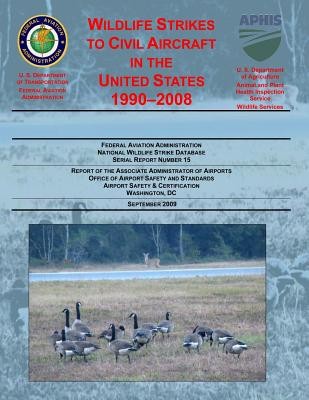
- We will send in 10–14 business days.
- Author: U S Department of Transportation
- Publisher: CreateSpace Independent Publishing Platform
- Year: 2013
- Pages: 74
- ISBN-10: 1494425769
- ISBN-13: 9781494425760
- Format: 21.6 x 27.9 x 0.4 cm, softcover
- Language: English
- SAVE -10% with code: EXTRA
Wildlife Strikes to Civil Aircraft in the United States (e-book) (used book) | bookbook.eu
Reviews
Description
The 7,516 reported wildlife strikes to U.S. civil aircraft in 2008 brought the 19 year total of wildlife strikes between 1990 and 2008 to 89,727. Birds (97.4%) and terrestrial mammals (2.1%) were struck 72% of the time at or below 500 feet AGL and 92% of the time at or below 3,000 feet AGL. Both classes of animals were struck more often in the late summer/ autumn season. Fifty-one percent of bird strikes occurred between July and October while 61% of terrestrial mammal strikes occurred between July and November. Terrestrial mammals are more likely to be struck at night (64%) whereas birds are struck more often during the day (62%). Both birds (60%) and terrestrial mammals (55%) are more likely to be struck during the landing (i.e., descent, approach or landing roll) phase of flight compared to take-off and climb (37% and 34%, respectively).
EXTRA 10 % discount with code: EXTRA
The promotion ends in 19d.06:21:01
The discount code is valid when purchasing from 10 €. Discounts do not stack.
- Author: U S Department of Transportation
- Publisher: CreateSpace Independent Publishing Platform
- Year: 2013
- Pages: 74
- ISBN-10: 1494425769
- ISBN-13: 9781494425760
- Format: 21.6 x 27.9 x 0.4 cm, softcover
- Language: English English
The 7,516 reported wildlife strikes to U.S. civil aircraft in 2008 brought the 19 year total of wildlife strikes between 1990 and 2008 to 89,727. Birds (97.4%) and terrestrial mammals (2.1%) were struck 72% of the time at or below 500 feet AGL and 92% of the time at or below 3,000 feet AGL. Both classes of animals were struck more often in the late summer/ autumn season. Fifty-one percent of bird strikes occurred between July and October while 61% of terrestrial mammal strikes occurred between July and November. Terrestrial mammals are more likely to be struck at night (64%) whereas birds are struck more often during the day (62%). Both birds (60%) and terrestrial mammals (55%) are more likely to be struck during the landing (i.e., descent, approach or landing roll) phase of flight compared to take-off and climb (37% and 34%, respectively).


Reviews